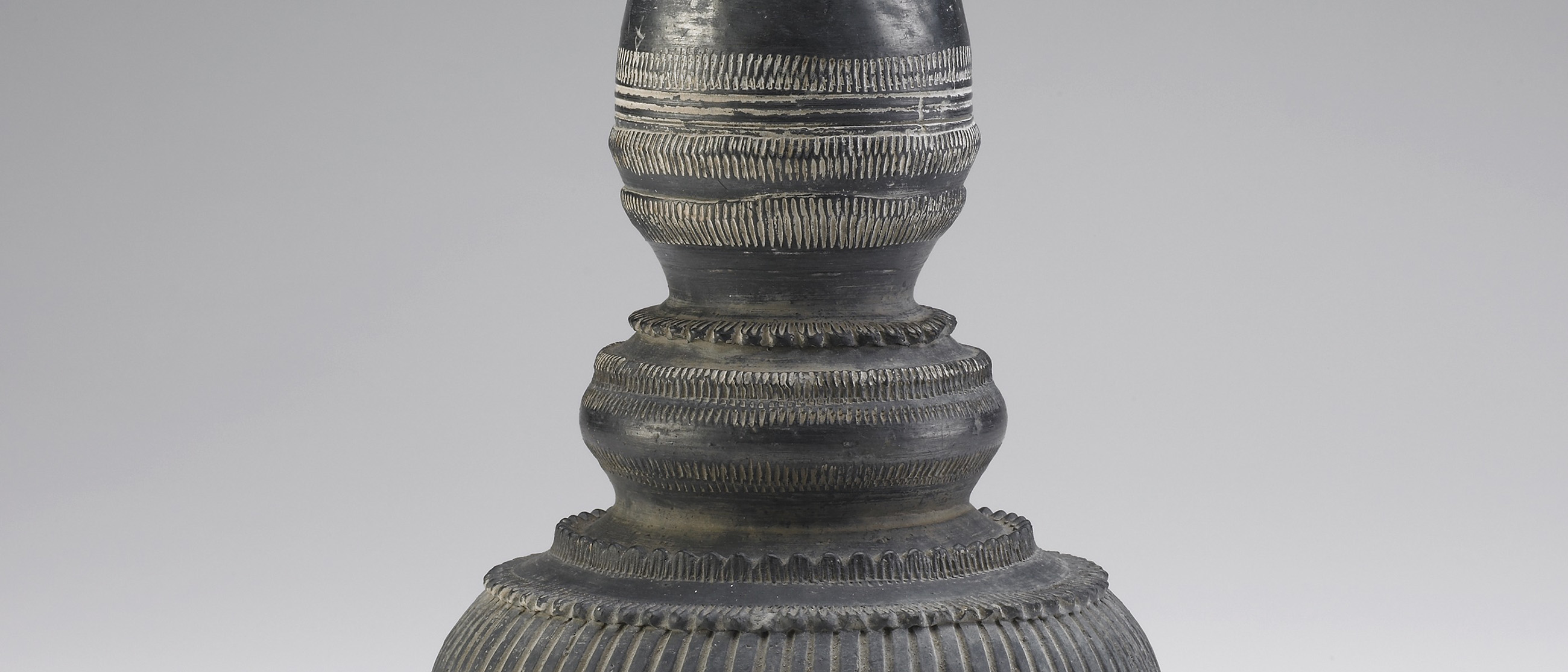BLACKENING
View all related objects in the collections
The process of blackening unglazed or slip-coated earthenware in the course of firing was practiced by some pottery-making centers in Mainland Southeast Asia, both in early prehistoric times and in recent centuries. As a practical alternative to glazing for reducing porosity, this process served to fill the pores of the vessel with carbon. The ritual and aesthetic goals of the early practice elude explanation. In later instances, depending on the context, blackened earthenware may have approximated the patina of iron (in the case of alms bowls) or the sheen of black lacquer (on water bottles).
The blackening is accomplished at the end of the firing by smothering the kiln with organic material in order to restrict access to oxygen as the pots cool. In the "reducing atmosphere" thus created, the chemical state of the iron in the clay is reduced to a form that appears black (FeO) rather than red (Fe2O3). Smoke produced by the smoldering of the organic material, which lacks sufficient oxygen to burn cleanly and quickly, deposits carbon on the surface of the vessel and in the pores and crevices.
Louis Katz describes the process used by potters (as of 1991) at Mung Kung, south of Chiang Mai. There earthenware pots (coated with fine red slip mixed with diesel oil and burnished with quartz pebbles) are fired in an updraft kiln.
When the firing is complete, some of the pots are removed still hot from the kiln and stacked in a column on the ground. A cylindrical bottomless basket, which has been soaked in water so it will not burn is placed over the column of hot pots, and the space around the pots is filled with damp sawdust for post-firing reduction similar to American raku; the result is carbon-rich, black surfaces. Pots allowed to cool slowly in the kiln retain their red color (Katz 1991).
In early prehistoric Southeast Asia, a distinctive form of decoration termed "rocker stamping" appears in combination with blackening during firing in the Early Phase at Ban Chiang (2000–1600 BCE) and is widespread throughout Vietnam, Cambodia, and Burma.
In historical contexts, blackened earthenware water bottles are known to have been produced at Lamphun during the seventeenth century (Di Crocco 1991) and at Ban Nong O in the Sawankhalok kiln complex (Don Hein, pers. comm.) and were made until the 1970s in Vientiane (Patricia Cheesman, pers. comm.). They continue to be made in Shan state, Burma (Charlotte Reith, pers. comm.) and at Mung Kung (Katz 1991). Water bottles of this type are used not for cooling water (by evaporation through the porous clay), but for serving guests or offering water in Buddhist or ancestral rituals.
A similar-looking blackened surface was also produced by applying vegetal resin to the surface of just-fired pots, a practice used by potters in the various communities of the Central Highlands in Central Vietnam and by the Cham potters living along the coast in the same region (see Resin).

